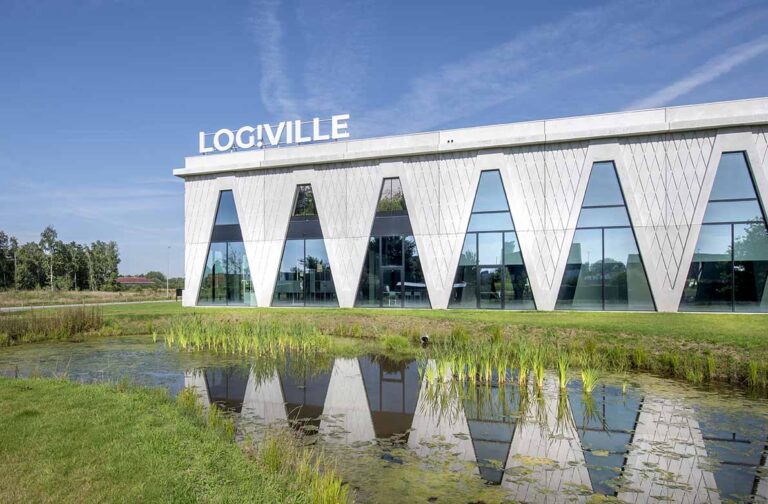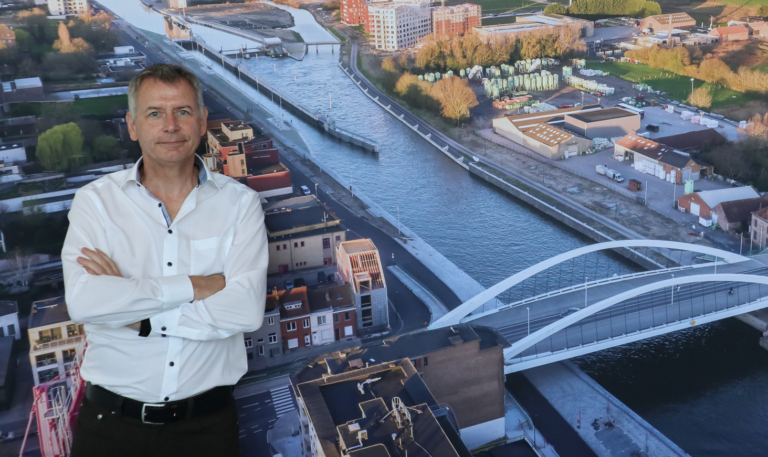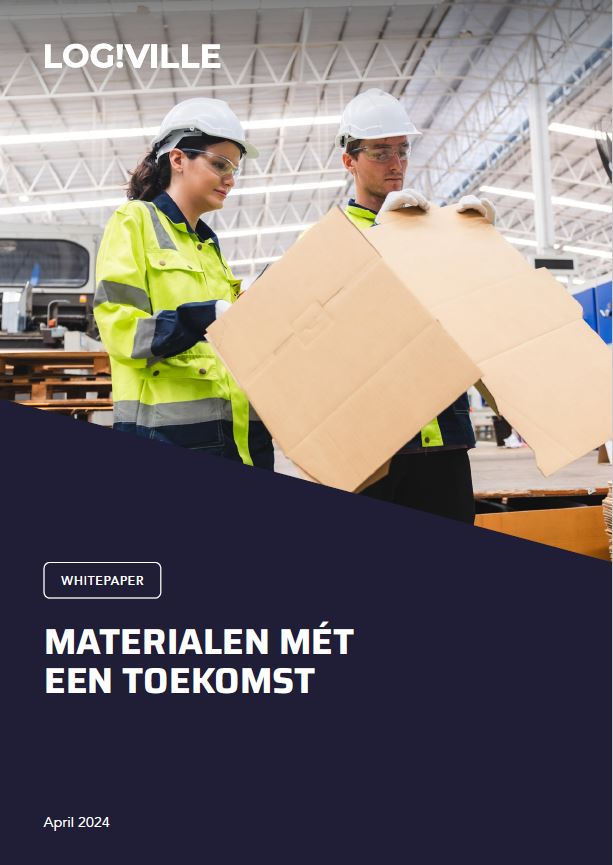Erik Switsers (BOMA Robotics): ‘Warehouses are the ideal setting for cleaning robots’

Last year, BOMA was added to the account of Log!Ville’s Innovation Partners. At first glance, the inclusion of a distribution company for cleaning products and machinery may seem like an odd choice. However, there is a clear link between innovation and logistics: BOMA Robotics is working on cleaning robots for various areas, including warehouses. ‘Logistics buildings are ideal for this type of robotisation,’ Erik Switsers says, division manager of Machines & Robotics at BOMA.
BOMA is a family company that was created 49 years ago as a supplier of brushes and mats (‘borstels’ and ‘matten’ in Dutch – hence the company name). Today, it distributes a wide range of products and materials for cleaning, everything from cleaning products, cleaning machines and robots to trolleys, chemicals and disinfection agents. The main target group encompasses cleaning companies, the healthcare sector, governments (municipalities, sports halls, etc.), industry and logistics. It is active in the Netherlands, Luxembourg and France, as well as Belgium.
‘Our portfolio of machines has gradually expanded and is now enormous; it includes dust and industrial suction machines, high-pressure washers, single-disc machines, sweeping and scrubbing machines and everything in between. Five years ago, we brought the first cleaning robots onto the market,’ says Erik Switsers.
‘We were already a member of VIL and that is how we came into contact with Log!Ville. BOMA takes care of the logistics for the products and materials that it distributes so we have a strong logistics set-up, which is managed from our main warehouse on Noorderlaan in Antwerp. There, we have a separate division for the machines and robots, called BOMA Robotics,’ he adds.
A difficult environment
When BOMA wanted to get involved in the distribution of cleaning robots five years ago, the quality of the available machines was far from satisfactory. ‘They were all existing machines that had been robotised or robots that could also clean. In every case, the results were poor and pretty disappointing in complex environments such as hospitals or even warehouses. In the end, we went to Lionsbot in Singapore,’ explains Erik Switsers.
The fact that there is a high level of interest in cleaning robots in the care and logistics sectors comes as no surprise to Erik. ‘There is a great lack of staff in these two sectors. There is especially a lack of qualified cleaning staff. However, dull, repetitive and physically demanding tasks can be handed over to robots in order that the staff can focus on spaces where the more delicate, intense cleaning tasks must be carried out, such as offices, and meeting rooms among others. Or, in the healthcare sector, the rooms for patients.’
Furthermore, the warehouse layout is the ideal setting for robotising the cleaning task. ‘Mapping out the building and the fixed objects to allow the robots to navigate efficiently is fairly easy. We can also indicate ‘forbidden’ zones, such as loading docks and zones where forklift trucks are always in operation and where there may be a risk of accidents,’ Erik Switsers continues.
Nevertheless, there were challenges. Where people are moving around, advanced safety protocols are always vital but the most important issue in the warehouse was the high level of litter, such as packaging, tension belts and pallet splinters. ‘Brushing is almost always necessary before water-based cleaning takes place, just as with traditional scrubbing machines.’
Autonomous but not fully automated
Although logistic buildings are ideal for these developments, cleaning robots are not yet fully embedded in this sector. ‘In the healthcare sector, demand has grown enormously over the past two years due to the COVID crisis, with more emphasis being placed on the quality of cleaning and disinfection. The need is therefore greater. Nevertheless, we have noticed that there is an increasing demand from logistics companies due to shortages in personnel. A cleaning company can be used in offices but a warehouse is usually cleaned by the company’s staff. ultimately, there is a benefit in using these people elsewhere and more effectively,’ Erik Switsers explains.
However, a human and a cleaning machine cannot simply be exchanged for a robot. A robot works fully autonomously but cannot inherit all tasks. Filling a water tank, discharging the dirty water and charging the batteries at a docking station can all be fully automated but the day-to-day maintenance of the machine itself, e.g. cleaning brushes and rubbers, must still be done by a member of staff. In some cases, the cleaning schedules also have to be adjusted (e.g. cleaning takes place outside the operational hours of the warehouse) so that the robot’s potential is maximised. ‘This leads to greater efficiency from the robot and a better cleaning result,’ Erik Switsers says.
Log!Ville has three aims
‘There should be a careful consideration process before a human and a machine are replaced by a robot. That is why we visit the companies to talk about their needs and expectations. That is also one of our three targets when it comes to being a partner with Log!Ville. Firstly, it offers a fantastic and relevant environment for demonstrating the possibilities of a cleaning robot. Secondly, the innovative character of Log!Ville helps us to more effectively showcase the technology.
Thirdly, it supports our quest for cross-pollination with operational managers and the other partners,’ Erik Switsers explains. ‘By creating connections with them, we can understand the needs of the logistics sector more quickly and engage in useful discussions about the challenges. We have already mentioned that we do not manufacture the robots ourselves but this input can help our supplier to improve his products. We see our collaboration with Lionsbot as a long-term partnership. Technology is developing extremely rapidly and exchanging know-how and experience with their engineers means we can help them evolve in the right direction.’




